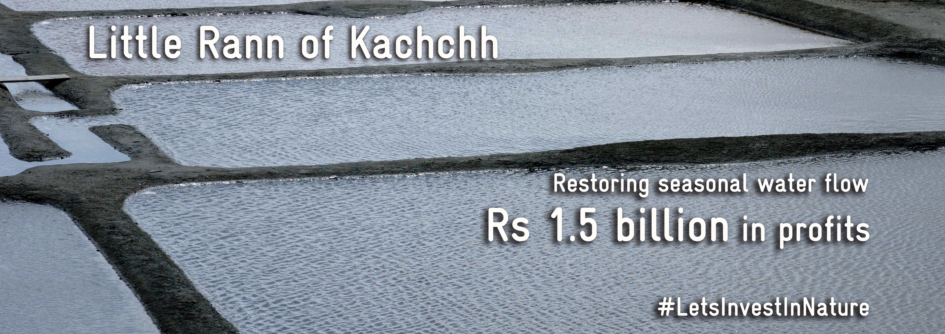Shubhangi Singh: How often does one experience a terrain that is as dramatically transformative in it’s characteristic as one found in The Little Rann of Kachchh? Like a seasonal cloak, The Little Rann of Kachchh (LRK) adorns itself with different landscapes, thus, completely shifting shape, it’s function and it’s appeal.
The Little Rann of Kachchh (LRK), a salt marsh in Gujarat is a pristine, vast plain that stretches into the horizon. Sprawled across over 3,570 sq. km, LRK is a unique landscape with characteristics of both– wetlands as well as deserts. This bio-diversity fertile landscape is due to seasonal rivers flowing through the area which go on to meet the sea water from the Gulf of Kutch. Seasonal inflow of water during monsoon transforms the LRK into a large shallow wetland and, in subsequent warmer months, the floodwaters evaporate, gradually transforming the LRK into a saline, dusty dessert. This seasonal water dynamics makes the LRK a highly productive landscape – both ecologically and economically. The wetland is a source for one third of India’s total inland salt production. Beside producing salt, the region is also the main source of ginger prawn export. Though a seemingly stark landscape, it is rich in biodiversity and is an ecologically important area for wildlife and many local and migratory waterbirds. It is known to be the world’s last refuge of the Indian Wild Asses and acts as a major nesting ground for the gorgeous Lesser Flamingoes– the only place outside of Africa to serve as a conducive environment for breeding of these magnificent birds. These, are among just a few species that are found here, in the little Rann of Kachchh.
Livelihoods of roughly 12,000 households are linked with the ecosystem services. The annual flow of economic benefits from LRK is estimated at a whopping 1.5 billion (rupees/ annum) including tourism that is drawn to this remarkable landscape and the national parks around the area. Unfortunately, today, we are at a risk of losing all this by upsetting the delicate water balance of the Little Rann of Kachchh. The ecosystem services of LRK are increasingly threatened by upstream hydrological regime changes. By increasing diversion and storage of water from the catchment into dams and for the purpose of irrigation, the seasonal flow of freshwater into the LRK is reduced. Further, the blocking of the creeks reduces the essential seawater inflow into the LRK, hence, impinging upon the natural interplay between salt production, prawn fishing and the migratory patterns. Without the seasonal water flow dynamics, the LRK loses it’s unique ecological character, and subsequently, it’s productivity.
The Little Rann of Kachchh is at a stage where by optimising fisheries and salt production in a sustainable manner, we can reverse this impending crisis. By implementing policies to balance upstream land use with hydrological and ecological functioning of The Little Rann of Kachchh, we can successfully bring together developmental plans with this unique landscape’s natural offerings. With a terrain like LRK’s we should look to conserve this resource rich land for all present as well as the future generations to experience.

